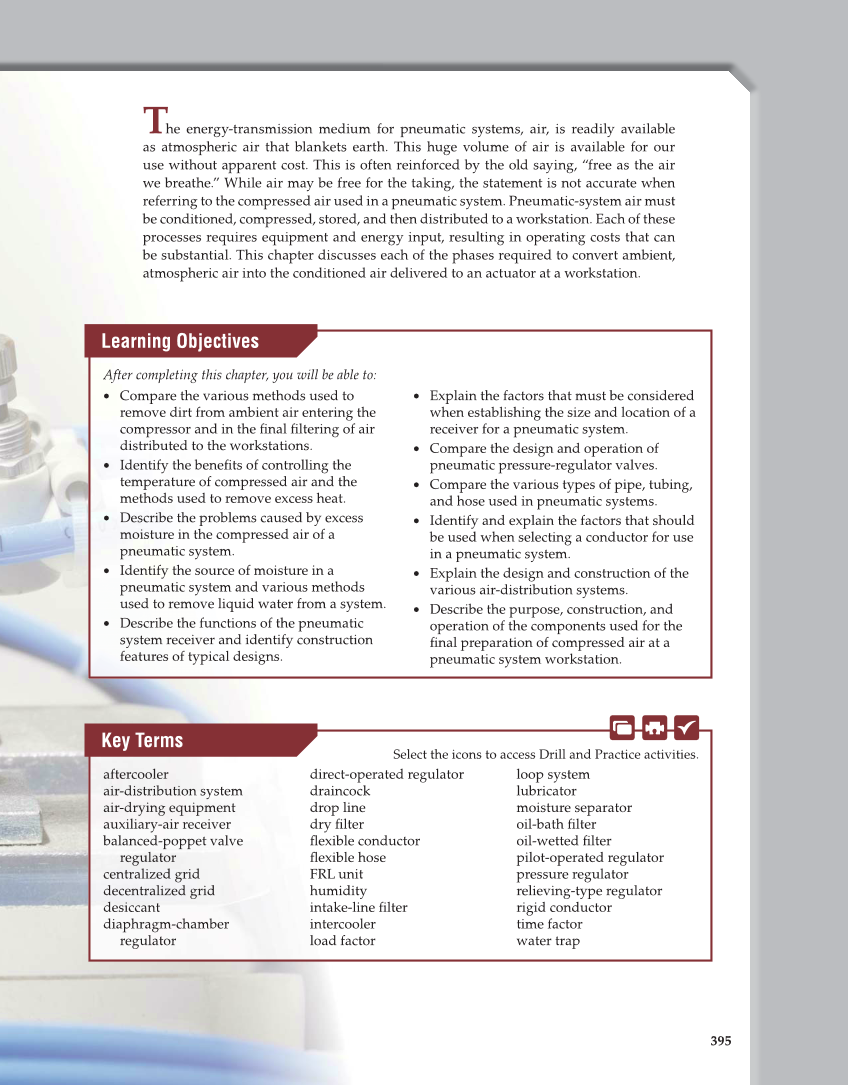395 aftercooler air-distribution system air-drying equipment auxiliary-air receiver balanced-poppet valve regulator centralized grid decentralized grid desiccant diaphragm-chamber regulator direct-operated regulator draincock drop line dry fi lter fl exible conductor fl exible hose FRL unit humidity intake-line fi lter intercooler load factor loop system lubricator moisture separator oil-bath fi lter oil-wetted fi lter pilot-operated regulator pressure regulator relieving-type regulator rigid conductor time factor water trap Key Terms T he energy-transmission medium for pneumatic systems, air, is readily available as atmospheric air that blankets earth. This huge volume of air is available for our use without apparent cost. This is often reinforced by the old saying, “free as the air we breathe.” While air may be free for the taking, the statement is not accurate when referring to the compressed air used in a pneumatic system. Pneumatic-system air must be conditioned, compressed, stored, and then distributed to a workstation. Each of these processes requires equipment and energy input, resulting in operating costs that can be substantial. This chapter discusses each of the phases required to convert ambient, atmospheric air into the conditioned air delivered to an actuator at a workstation. After completing this chapter, you will be able to: „ Compare the various methods used to remove dirt from ambient air entering the compressor and in the fi nal fi ltering of air distributed to the workstations. „ Identify the benefi ts of controlling the temperature of compressed air and the methods used to remove excess heat. „ Describe the problems caused by excess moisture in the compressed air of a pneumatic system. „ Identify the source of moisture in a pneumatic system and various methods used to remove liquid water from a system. „ Describe the functions of the pneumatic system receiver and identify construction features of typical designs. „ Explain the factors that must be considered when establishing the size and location of a receiver for a pneumatic system. „ Compare the design and operation of pneumatic pressure-regulator valves. „ Compare the various types of pipe, tubing, and hose used in pneumatic systems. „ Identify and explain the factors that should be used when selecting a conductor for use in a pneumatic system. „ Explain the design and construction of the various air-distribution systems. „ Describe the purpose, construction, and operation of the components used for the fi nal preparation of compressed air at a pneumatic system workstation. Learning Objectives Select the icons to access Drill and Practice activities. Ch16.indd 395 5/2/2019 12:45:14 PM
